By Emily Smith
Next Lesson - Cellular Adaptations
Abstract
- Atherosclerosis is a very common condition affecting arteries.
- Risk factors include age, hyperlipidaemia, smoking, hypertension and family history.
- It begins as an asymptomatic plaque, however, when this becomes complicated it can result in a reduction in blood supply to tissue, therefore causing a range of different clinical conditions such as acute coronary syndromes, stroke and peripheral vascular disease depending on the location of the plaque.
Core
Atherosclerosis is a condition affecting large and medium sized arteries. It involves the formation of atherosclerotic plaques within the tunica intima of these arteries. These plaques often form at places where flow of blood is more turbulent, for example at branching points of arteries. The plaque itself is asymptomatic, however, if it occludes enough of the artery (70-80% of the lumen) it can lead to ischaemic damage.
Atherosclerosis commonly affects:
- Abdominal aorta
- Coronary arteries
- Carotid arteries
- Cerebral arteries
- Arteries in the leg
Risk Factors for Plaque Formation
Risk factors for atherosclerosis can be defined as modifiable and non-modifiable:
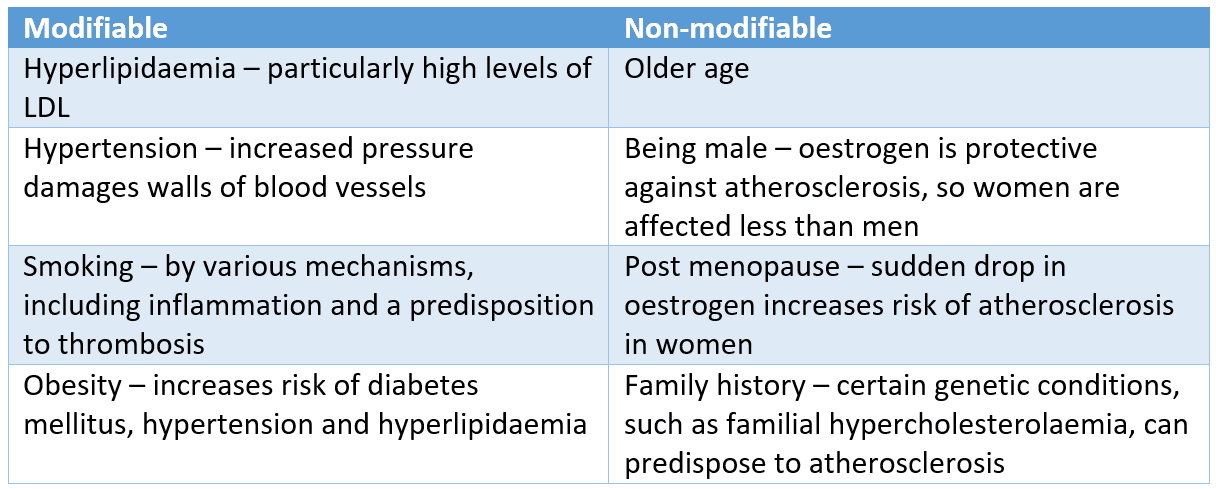
Table - The risk factors for atherosclerosis
SimpleMed original by Emily Smith
The most important risk factor for atherosclerosis is hypercholesterolaemia – raised serum cholesterol. Some signs of hypercholesterolaemia are corneal arcus, tendon xanthoma and xanthelasma. These are deposits of cholesterol.
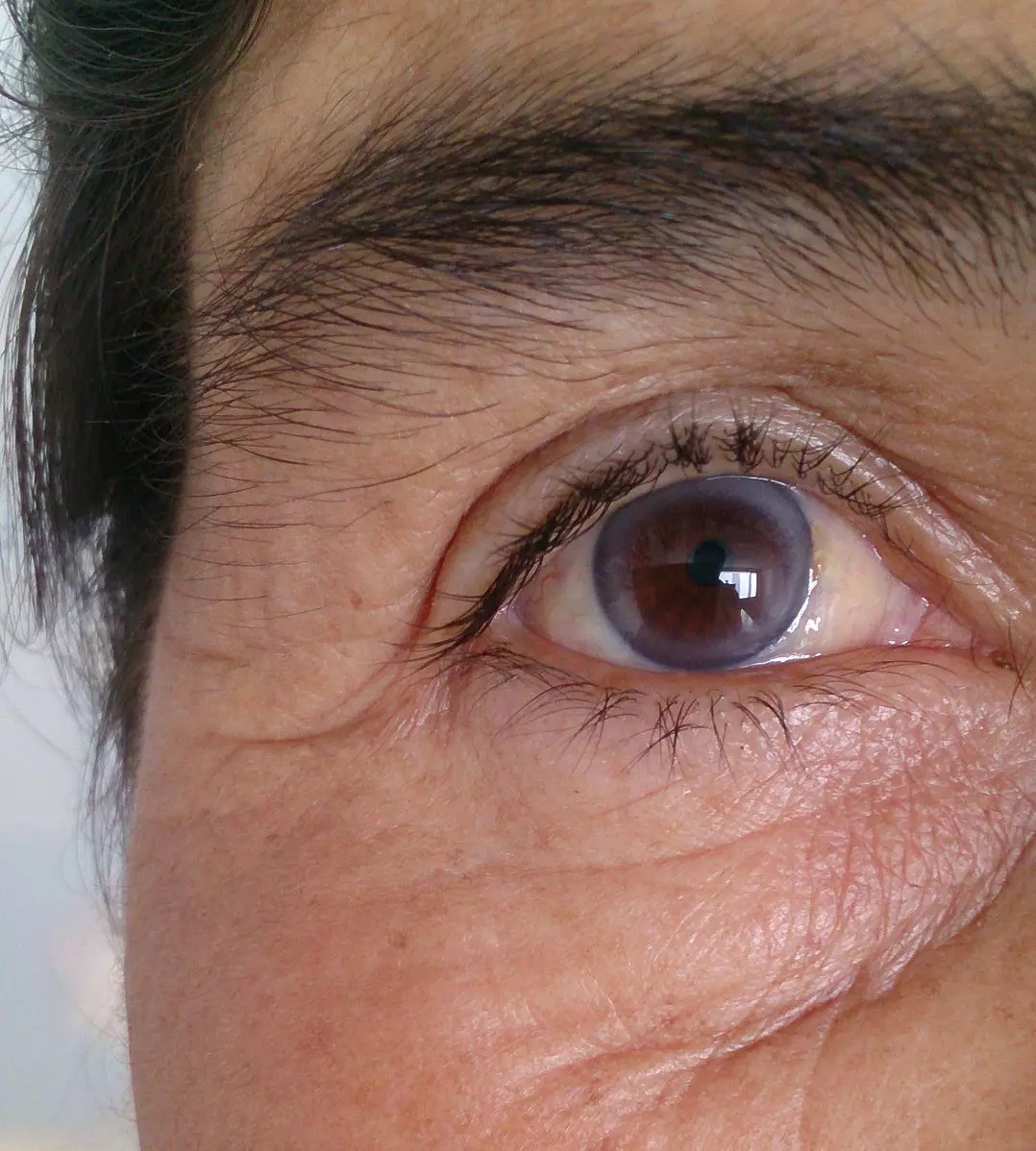
Image - Corneal arcus: a deposition of lipid in the outer edges of the cornea forming a white ring
Creative commons source by Afrodriguezg [CC BY 3.0 (https://creativecommons.org/licenses/by/3.0)]

Image - Tendon xanthoma: deposition of lipid in tendons which forms lumps under the skin
Creative commons source by Kumar et al. (2008) [CC BY 3.0 (https://creativecommons.org/licenses/by/3.0)]
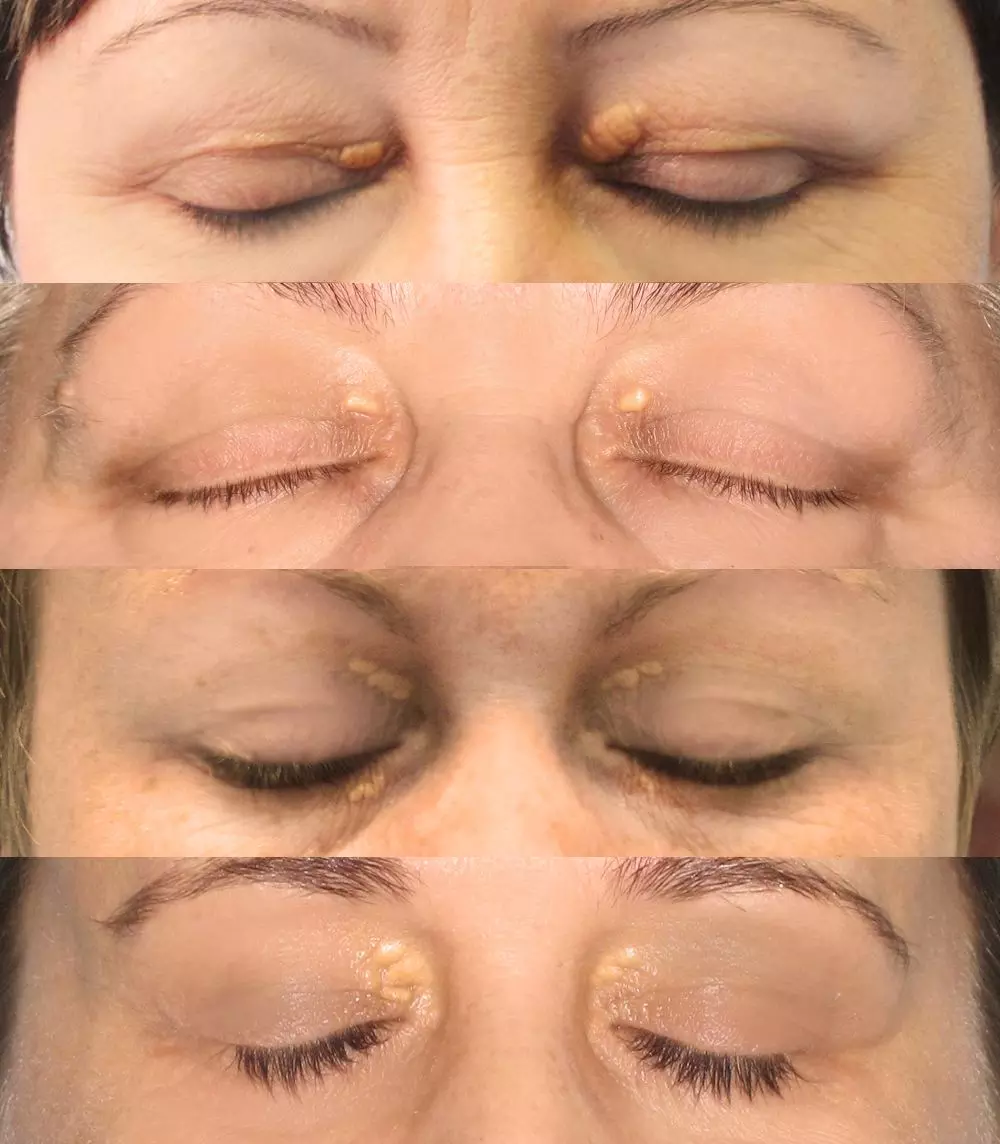
Image - Eyelid xanthelasma: symmetrical deposition of cholesterol in the skin around the eyelids
Creative commons source by Oleg Tymofii [CC BY 3.0 (https://creativecommons.org/licenses/by/3.0)]
Formation of the atherosclerotic plaque first involves chronic insult to the arterial wall (for example by hypertension or hyperglycaemia) causing damage to the endothelium, followed by the response to the damage.
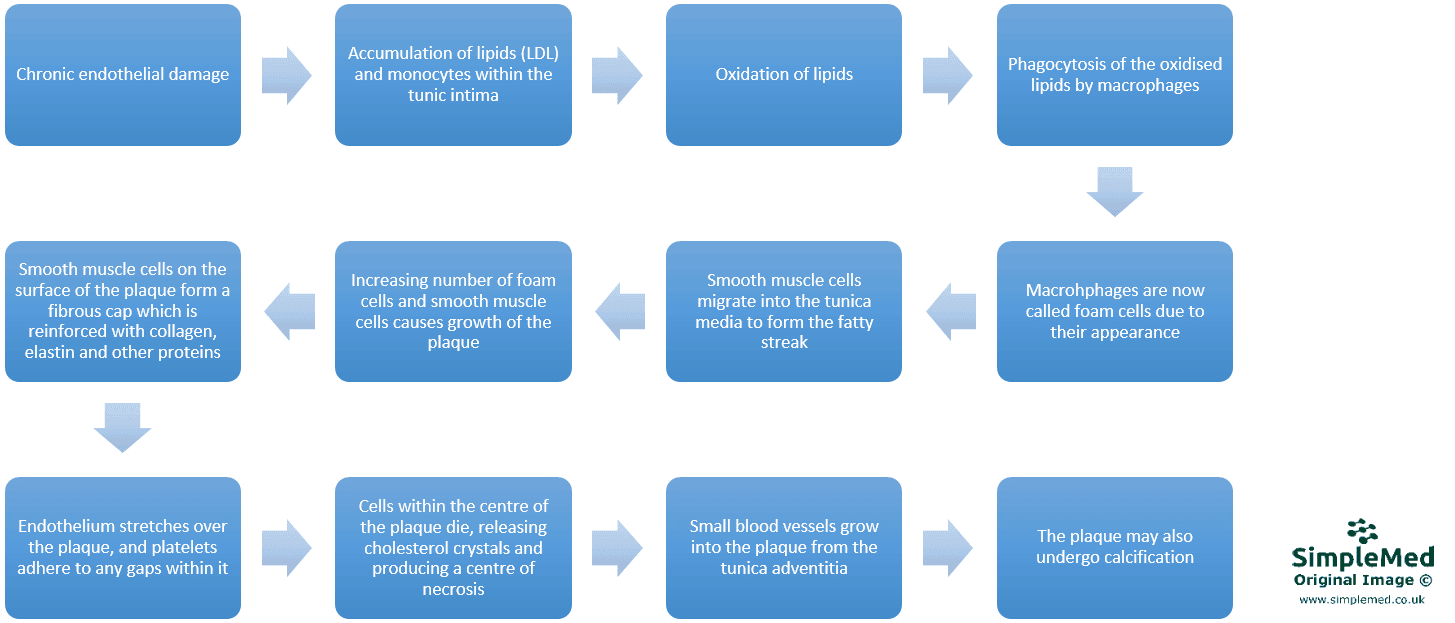
Diagram - The steps involved in the formation of an atherosclerotic plaque
SimpleMed original by Emily Smith
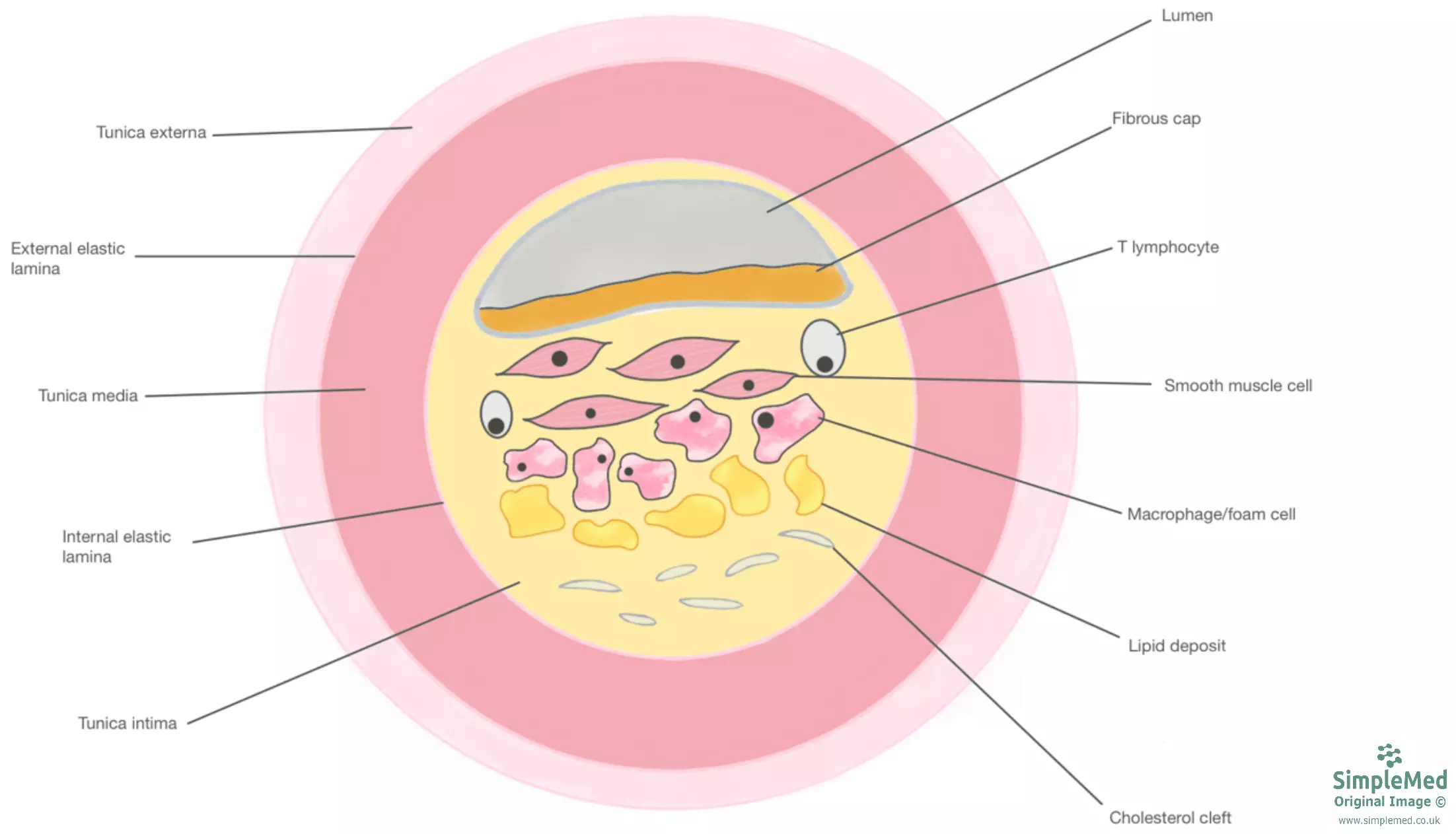
Diagram - A labelled cross section of an atherosclerotic plaque. The plaque has occluded a large proportion of the lumen, reducing blood flow through the artery. Inside, the plaque is full of atheroma made up of lipid, foam cells, lymphocytes and more.
SimpleMed Original by Emily Smith
Fatty Streak
- Early change in the formation of an atherosclerotic plaque
- Flat lesion that doesn’t affect blood flow
- Consists of foam cells, smooth muscle cells and some extracellular lipids
Simple Plaque
- Raised yellow or white lesion
- Starts to occlude the lumen of the artery
- Consists of fibrosis, necrosis, cholesterol crystals, extension into the tunica media, and growing of small vessels
Complicated Plaque
- This is progression of the disease that begins to cause symptoms. The different types of complicated plaques are explained below.
Complications of Atherosclerotic Plaques
Most plaques don’t produce any symptoms, however they have the potential to cause disease if they undergo certain processes.
- Progressive narrowing of lumen
- Stenosis of about 70-80% of the lumen leads to a significant reduction in blood flow.
- This can cause intermittent claudication or angina symptoms depending on the artery affected.
- Haemorrhage into the plaque
- This causes sudden expansion of the plaque, resulting in occlusion of the vessel or rupture of the plaque.
- Acute atherothrombotic occlusion
- Rupture of the plaque exposes thrombogenic substances to the blood stream which causes the formation of a thrombus within a very short period of time.
- This can cause occlusion of the artery and lead to infarction of the supplied tissues.
- Embolisation
- This is another complication of atherothrombosis.
- Small fragments break off from the thrombus and become lodged distal to the plaque.
- This can result in small infarctions.
- Calcification
- Causes stiffness of the arterial walls.
- These arteries may rupture. If this happens in the brain it will cause a haemorrhagic stroke.
- Aneurysm formation
- Local dilatations of an artery due to a weakened arterial wall.
- The vessel wall is stretched during systole, however has lost the ability to recoil back to its original shape and size so remain dilated.
- Aneurysms commonly occur in the abdominal aorta.
- Large aneurysms can rupture and cause a massive haemorrhage, or the plaque material can embolise to a distant site.
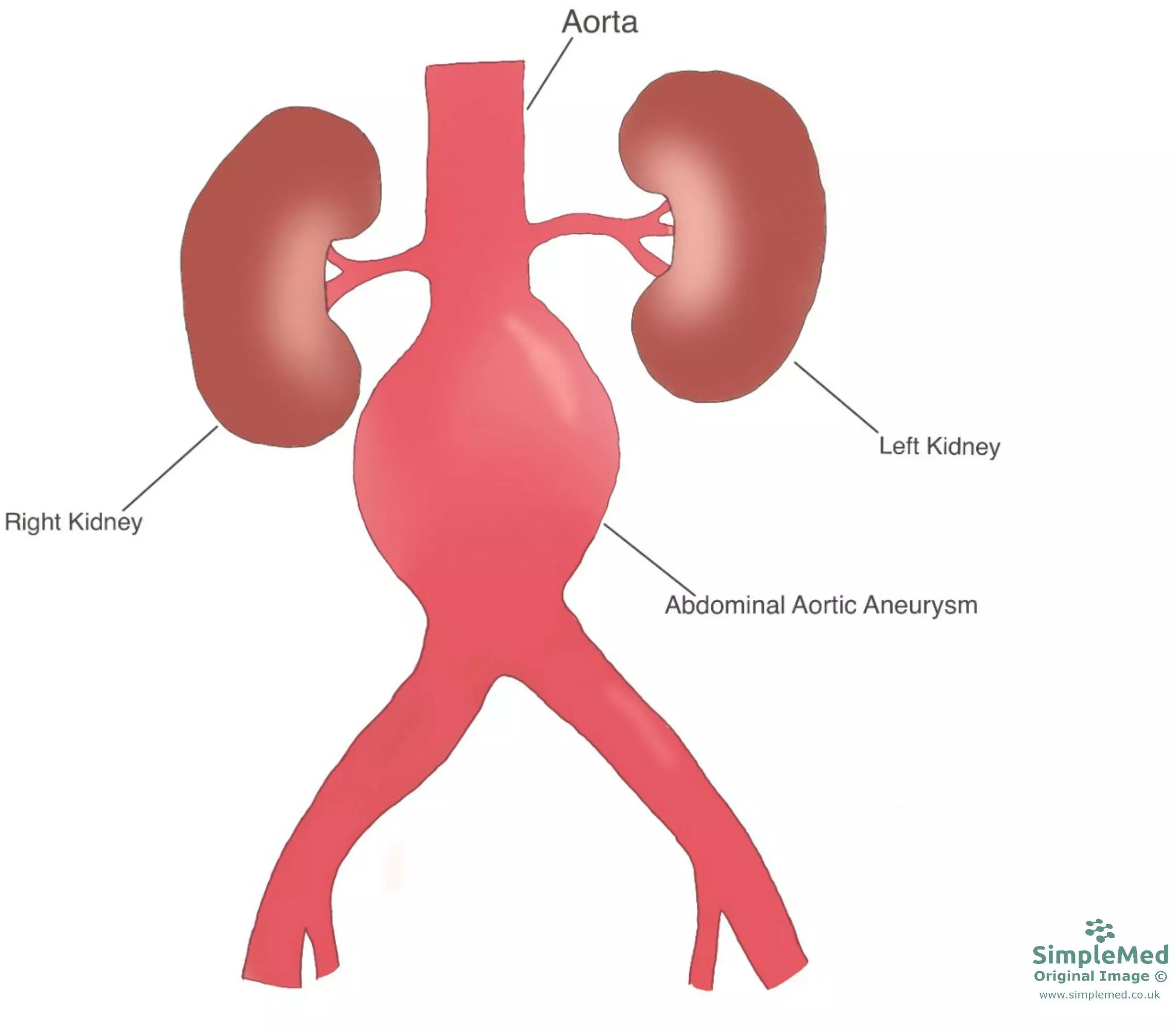
Diagram - An Abdominal Aortic Aneurysm (AAA). Large AAAs can be felt on palpation of the abdomen as large pulsatile masses.
SimpleMed original by Emily Smith
Clinical Effects of Atherosclerosis
Narrowing and blockage of vessels from atherosclerosis can lead to several conditions. The heart, brain, kidneys, legs and bowel are areas which are commonly affected.
Ischaemic Heart Disease
These conditions are caused by reduced blood flow to cardiac tissue due to atherosclerotic plaques in the coronary arteries. It can manifest as:
- Stable or unstable angina – transient ischaemia of cardiac tissue on exertion.
- Myocardial infarction – necrosis of cardiac tissue due to occlusion of a coronary artery (heart attack)
- Heart failure – can be caused by fibrosis of cardiac tissue due to infarction resulting in reduced ability to contract
- Arrhythmias - fibrosis of the heart muscle can disrupt electrical pathways
- Sudden cardiac death
Cerebral Ischaemia
This is caused by a sudden decrease in blood supply to the brain. This can be due to a carotid or cerebral artery atherosclerosis, thromboembolism, haemorrhage or cardiac arrest. This causes:
- Stroke – cerebral infarction caused by the occlusion of a cerebral artery by thrombosis or thromboembolism.
- Transient ischaemic attack (TIA) – cerebral ischaemia resulting in the symptoms of a stroke which resolve within 24 hours.
- Vascular dementia - ischaemic damage and reduced blood flow to the brain causing dementia.
Mesenteric Ischaemia
This type of ischaemia is caused by a reduction in blood supply to the bowel. It can cause:
- Ischaemic colitis – inflammation and injury to the large bowel due to inadequate blood supply, it can result in acute ulceration and haemorrhage.
- Malabsorption – results from chronic mesenteric ischaemia.
- Bowel infarction - occlusion of an artery supplying the intestines resulting in infarction.
Peripheral Vascular Disease
This group of conditions affects the lower limbs. It can present as:
- Intermittent claudication – cramping pain in the legs induced by exercise and relieved by rest caused by stenosis of the arteries to the legs.
- Leriche syndrome – stenosis of the iliac arteries, causes cramping pain in the buttocks and legs, and impotence.
- Ischaemic rest pain – continuous pain in the lower limb caused by ischaemia.
- Gangrene – loss of blood supply resulting in tissue death.
Conditions Affecting the Kidneys
- Hypertension – renal artery stenosis causing reduction in renal perfusion resulting in an increase in systemic blood pressure through activation of RAAS.
- Renal failure – renal artery stenosis can cause chronic kidney disease and end stage renal failure.
Atherosclerosis doesn’t have any symptoms until the plaque becomes complicated. Therefore, prevention mechanisms are important. These include:
- Stop/don’t start smoking
- Control hypertension
- Prevent obesity by a healthy diet and regular exercise
- Reduce alcohol intake
- Control diabetes mellitus
If a plaque becomes complicated and produces symptoms, then intervention for patients can include:
- Drugs such as statins and aspirin
- Thrombolysis
- Angioplasty
- Stents
- Coronary artery bypass graft
Edited by: Bethany Turner
Reviewed by: Dr. Thomas Burnell
- 15683

